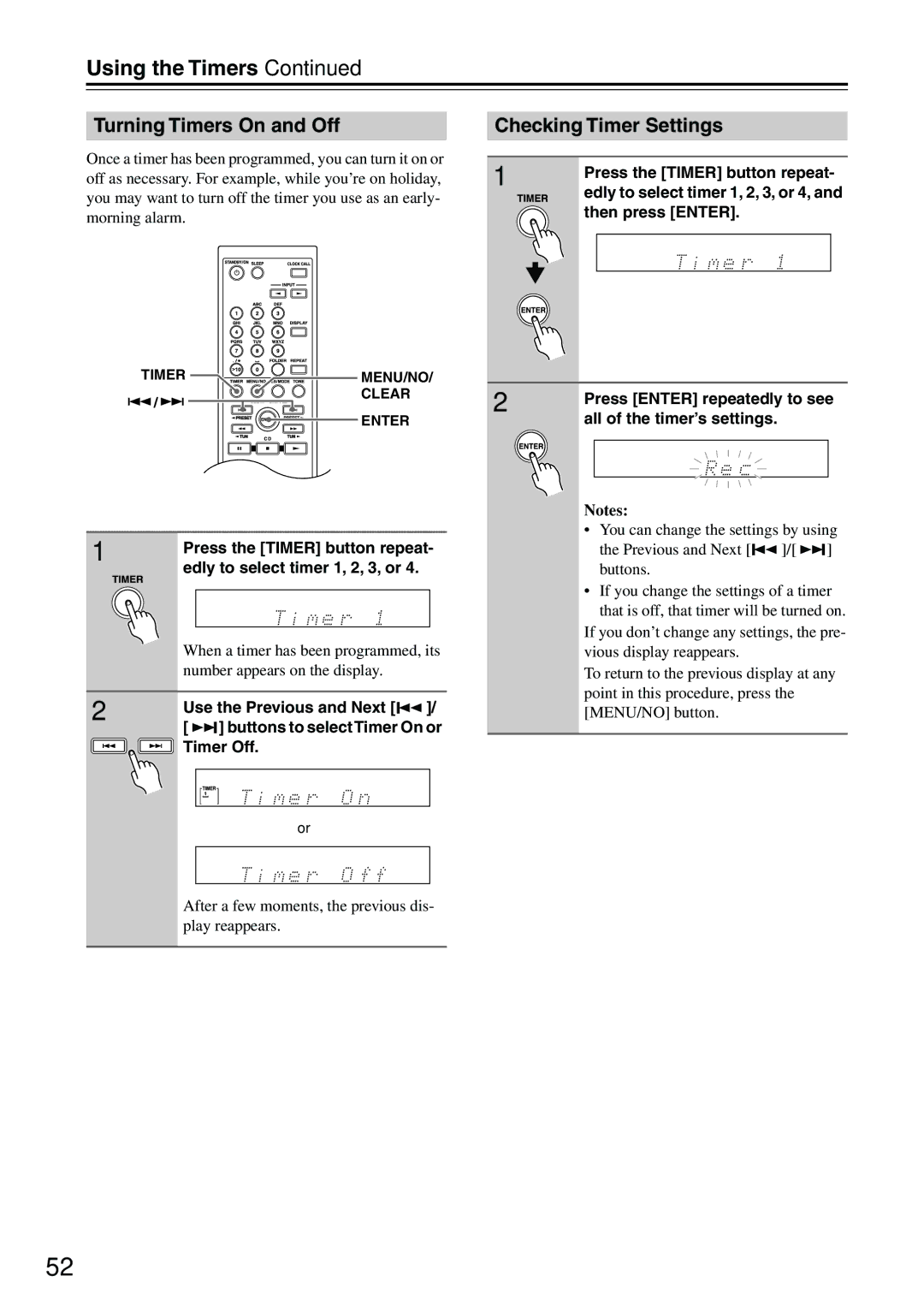
Turning Timers On and Off
Once a timer has been programmed, you can turn it on or off as necessary. For example, while you’re on holiday, you may want to turn off the timer you use as an early- morning alarm.
Checking Timer Settings
1 |
|
| Press the [TIMER] button repeat- | ||
|
|
| |||
|
|
| edly to select timer 1, 2, 3, or 4, and | ||
|
|
| |||
|
|
| then press [ENTER]. | ||
|
|
|
|
|
|
|
|
|
|
|
|
|
|
|
|
|
|
TIMER![]()
![]() /
/![]()
MENU/NO/ |
|
|
|
|
|
|
|
|
| |
CLEAR | 2 | Press [ENTER] repeatedly to see | ||||||||
ENTER | all of the timer’s settings. | |||||||||
| ||||||||||
|
|
|
|
|
|
|
|
|
| |
|
|
|
|
|
|
|
|
|
| |
|
|
|
|
|
|
|
|
|
| |
|
|
|
|
|
|
|
|
|
| |
|
|
|
|
|
|
|
|
|
| |
|
|
|
|
|
|
|
|
|
| |
|
|
|
|
|
|
|
|
|
| |
|
|
|
|
|
|
|
|
|
| |
1
2
Press the [TIMER] button repeat- edly to select timer 1, 2, 3, or 4.
When a timer has been programmed, its number appears on the display.
Use the Previous and Next [![]()
![]() ]/
]/
[ ![]()
![]()
![]() ] buttons to selectTimer On or Timer Off.
] buttons to selectTimer On or Timer Off.
Notes:
•You can change the settings by using
the Previous and Next [![]()
![]() ]/[
]/[ ![]()
![]()
![]() ] buttons.
] buttons.
•If you change the settings of a timer that is off, that timer will be turned on.
If you don’t change any settings, the pre- vious display reappears.
To return to the previous display at any point in this procedure, press the [MENU/NO] button.
or
After a few moments, the previous dis- play reappears.
52
